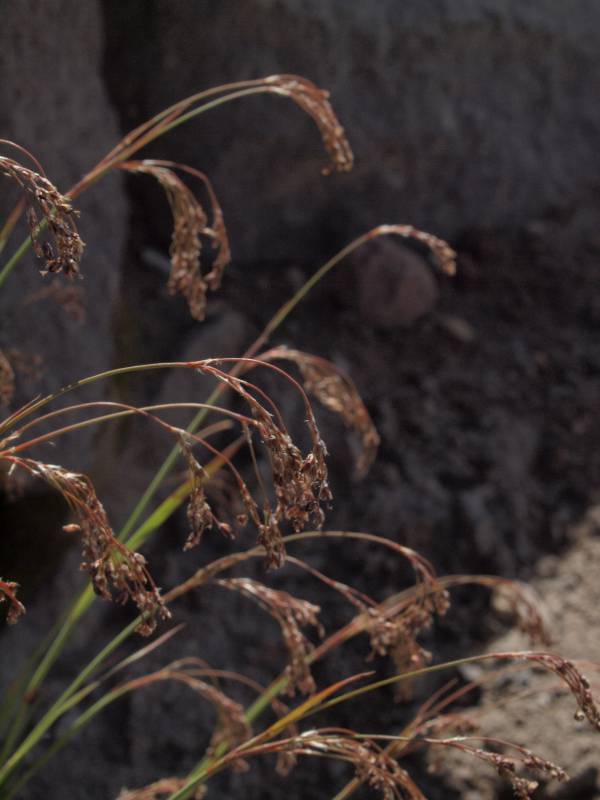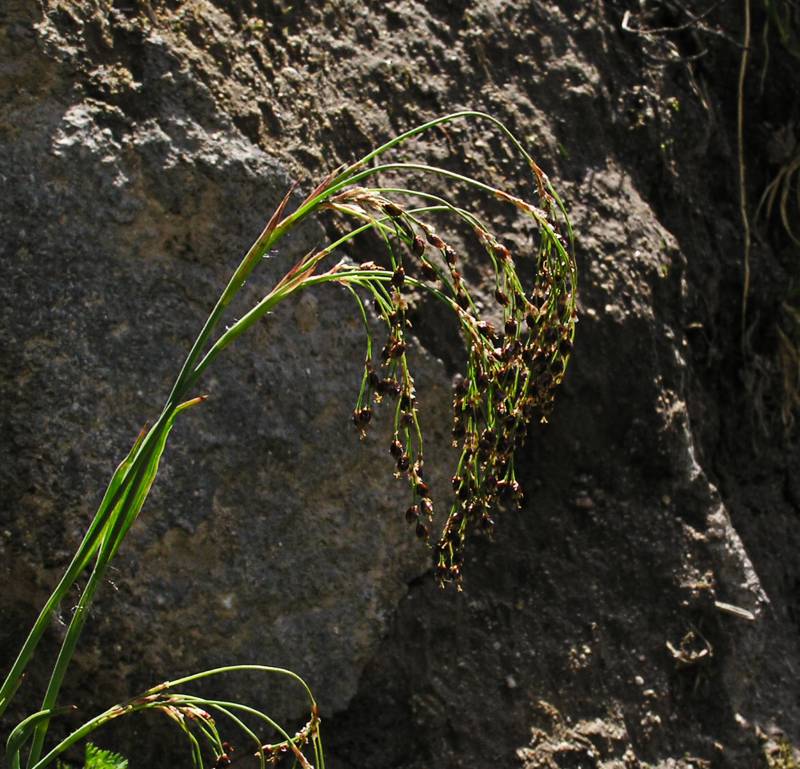Distribution: Occurring on both sides of the Cascades crest in Washington; Alaska to California, east to Alberta, Montana, and northwestern Wyoming.
Habitat: Moraines, rocky slopes, open forest, and subalpine to alpine meadows.
Flowers: May-August
Origin: Native
Growth Duration: Perennial
Conservation Status: Not of concern
Pollination: Wind
Perennial with short, horizontal rhizomes; stems densely clumped, 10-30 cm.
Basal blades green, 5-10 cm long and 2-4 mm broad, firm, typically glabrous, apex typically not callous; cauline leaves 2-3, 3-7 cm long and 3-5 mm broad.
Dichasial cyme, branches spreading at less than right angles, lax; proximal bract leaflike, up to 1.5 cm, bracts and bracteoles brown, clear at apex, margins ciliate.
Flowers single or in clusters of 2-3; tepals dark brown, 1-2.5 mm, generally equal, not curved, apex acute; anthers more or less equal to filament length; stigmas 5 times longer than style.
Capsules dark brown, ellipsoid, less than 2.5 mm but longer than tepals; beak absent; seeds light yellowish brown, lanceolate and narrow at ends, 1.2 mm.
Publication: Bull. Biol. Ser. Bull. State Univ. Montana. 15: 22. 1910.
Luzula wahlenbergii Rupr., misapplied [FNA22]
Luzula wahlenbergii Rupr. ssp. piperi (Coville) Hultén
PNW Herbaria: Specimen records of Luzula piperi in the Consortium of Pacific Northwest Herbaria database
WA Flora Checklist: Luzula piperi checklist entry
OregonFlora: Luzula piperi information
E-Flora BC: Luzula piperi atlas page
CalPhotos: Luzula piperi photos









